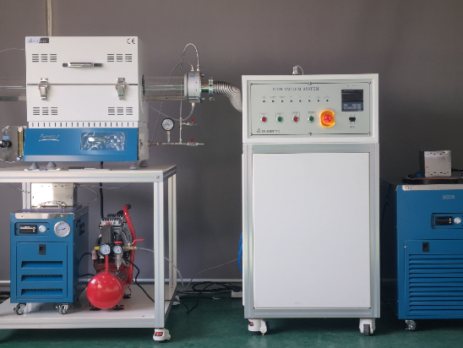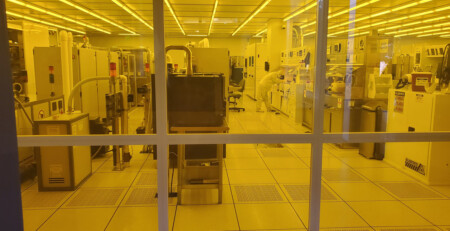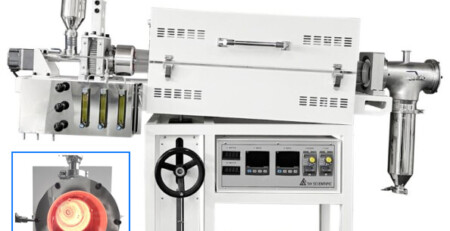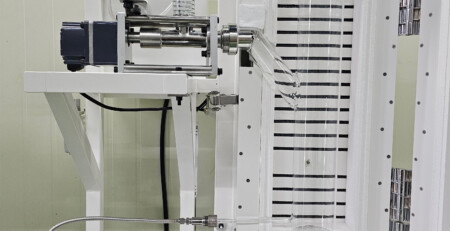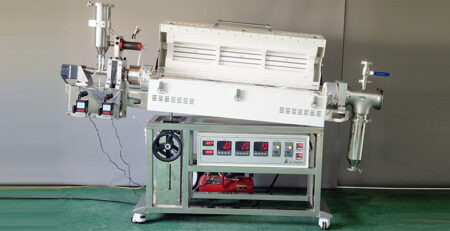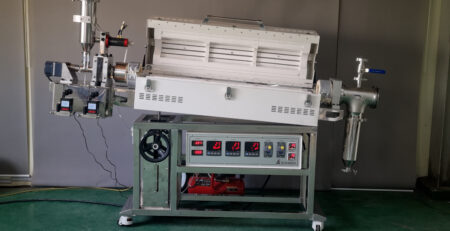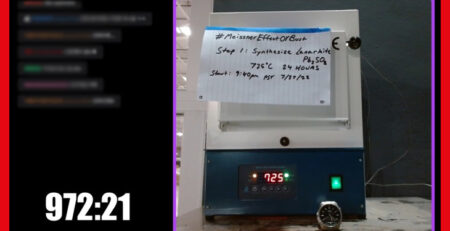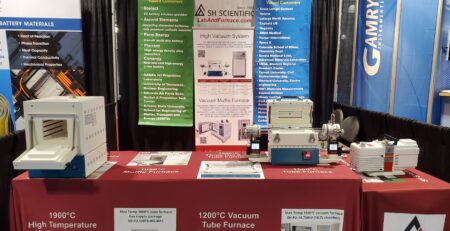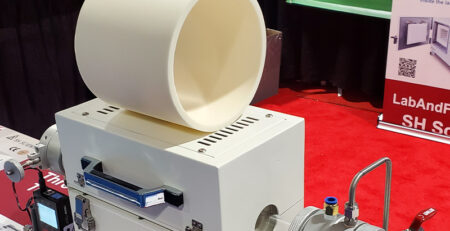High Vacuum Tube Furnace
Modern heat treatment processes often require a vacuum environment. Vacuum metallurgy, annealing, crystal growing, soldering, and brazing—to name just a few—all benefit from a sealed chamber with essentially no O2.
Several O2 evacuation techniques are commonly used for different heating methods and oxidation tolerances. However, a vacuum tube furnace provides the purest possible gas environment for highly sensitive or oxidation-prone samples.

Vacuum range & pump requirements
Three vacuum levels are widely used in laboratory heat treatment.
- Rough vacuums, which range from just below atmospheric pressure down to 1 mbar, though a rotary vane pump.
- Medium vacuums of 1 to 10-3 mbar, through a two-stage rotary vane pump. As their name suggests, these pumps use a pair of rotary mechanisms. The outlet of the first is the input of the second, which increases the potential vacuum pressure by orders of magnitude.
- High vacuums of 10-3 to 10-7 mbar, through a two-stage rotary vane pump and a turbomolecular or diffusion pump. The former acts as a “pre-vacuum” for the latter. (Pressures below 10-7 mbar are achievable, but seldom necessary for heat treatment.)
Please note that dry scroll and turbomolecular pumps are available as alternatives to rotary vane and diffusion pumps. We strongly recommend this option for scenarios like semiconductor fabrication, which cannot risk any degree of oil contamination.
Using the SH Scientific high vacuum system
Our standard high vacuum system comprises a diffusion pump and a 312 L/min dual stage rotary vane pump capable of 10-6 torr.
This standalone system is relatively simple to connect to any existing vacuum chamber. One common application is titanium annealing, for which we’ve already equipped a university’s mechanical engineering department as well as a medical implants manufacturer.
Below, you’ll find a summary of our in-house simulations under various conditions.
| Chamber type | Chamber size | Vacuum level & time | Tested equipment |
|---|---|---|---|
| Round quartz tube | 7.8L, 100 diameter x 1000mm long | 0.00005 torr, 5-7 minutes | Tube furnace SH-FU-100STG-WG |
| Square stainless box | 27L, 300 x 300 x 300mm | 0.0005 torr, 2-3 minutes | Vacuum oven SH-VDO-30NG |
| Square stainless box | 216L, 600 x 600 x 600mm | 0.0005 torr, 20-25 minutes | Vacuum oven SH-VDO-216NG |
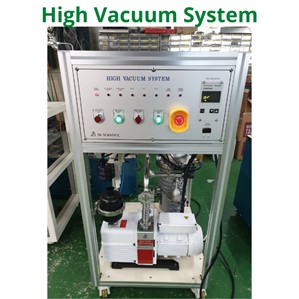
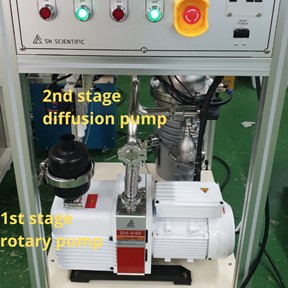
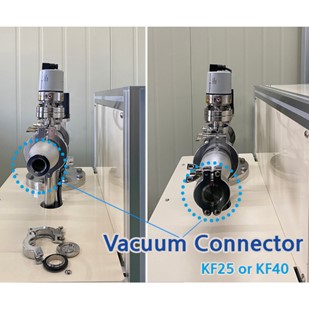
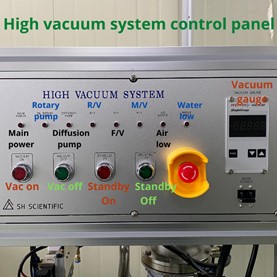
Selecting a high vacuum tube furnace
Three of our tube furnaces offerings are available with a high vacuum system. Below, you’ll find a quick guide to these options and their most common uses.
SH-FU-STG/LTG series (max temperature: 1200° C)
This series uses a Kanthal® A-1 heating element, which is made of a ferritic iron-chromium-aluminum alloy (FeCrAl) known for high resistivity and very good oxidation resistance. The alloy is intended for use at temperatures up to 1400°C (2550°F).
Common applications of the SH-FU-STG/LTG series include:
- Removing polymeric binder (debinding)
- Sintering
- Densification
- Silicone annealing
- Methane pyrolysis
- Aging of gasoline and diesel catalyst samples
- Heteroepitaxial growth of thin films on small substrates
- Growth of silicon-based nanostructures (3-zone tube furnace)
SH-FU-TH (max temperature: 1500° C) & SH-FU-TS series (max temperature: 1800° C)
These higher-temperature furnaces use silicon carbide and molybdenum disilicide electric heating elements, respectively. Their maximum element temperatures are 1625° C (SiC) and 1850° C (MoSi2).
Common uses for both series include:
- Calibration of temperature sensors (thermocouples)
- Melting
- Fabrication of metal molding devices (MIM)
- Soldering and brazing of electronic components
- Deposition of anti-oxidizing coatings on refractory metals
- Coating tests
- Hot corrosion tests with salt
For further options, technical inquiries, or potential customizations, please reach out to our US sales office.

